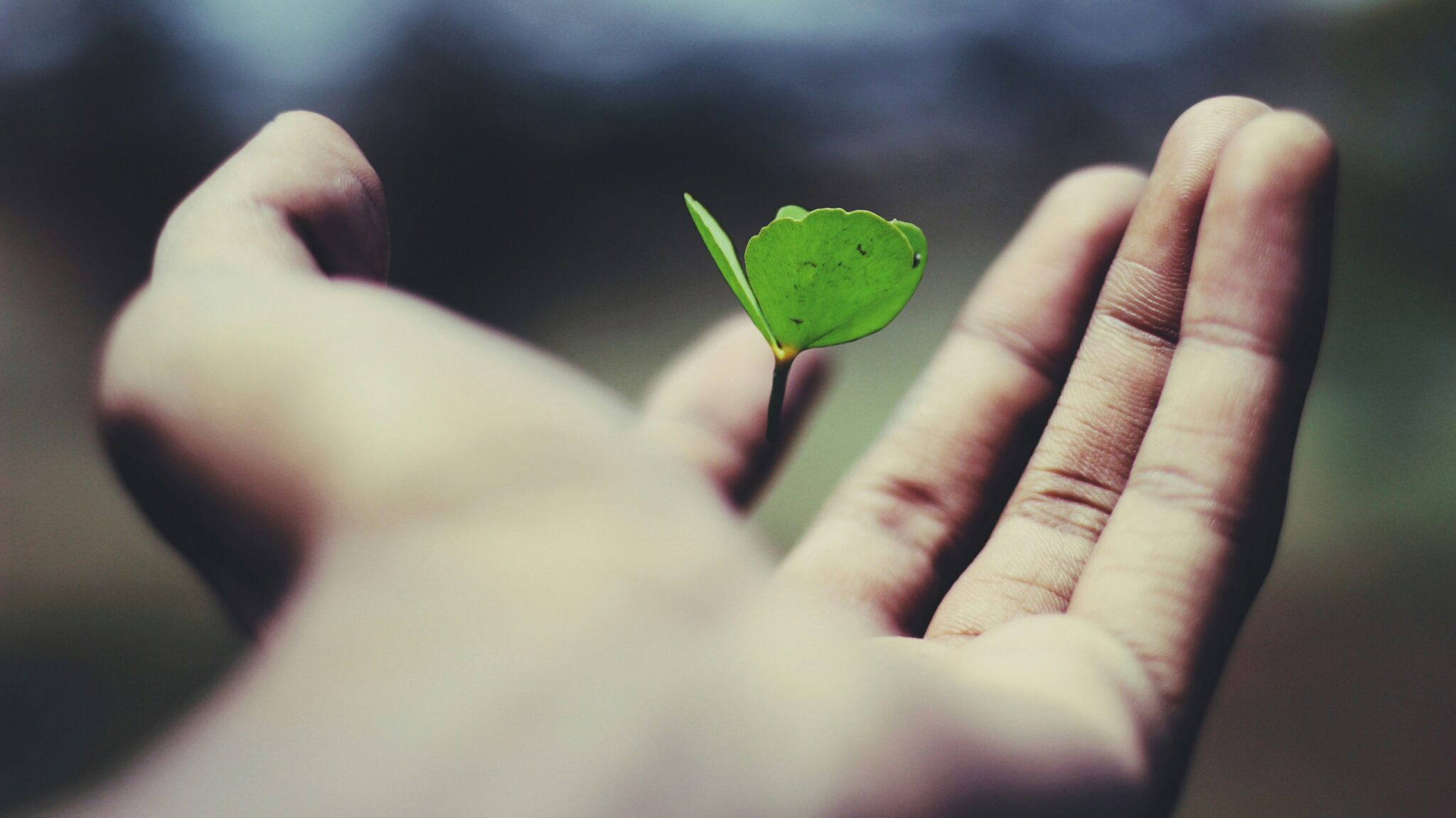"How he does not know" (Mark 4:27)
In Sunday’s Gospel, Jesus compares the mysterious growth of his life in us to the process of seeds sprouting underground.
Jesus is the kingdom of God made flesh and so we can understand him to be the sower in the parable: he throws his life, his seed, into the world, into us. But his life needs a spiritual death and burial in us before we can mysteriously bear fruit.
Of course, unlike the sower, Jesus does know how we grow spiritually; but we, like the sower, do not. Our growth in divine life involves suffering and death to our disordered desires. It is a gradual and hidden process, that has its own stages and steps: "first the shoot, then the ear, then the full grain in the ear" (4:28).
And when we finally begin to bear fruit in acts of unselfish love, we undergo another level of spiritual death again: "when the crop is ready, he loses no time: he starts to reap because the harvest has come" (4:29).
In other words, just as the fruit of the plant contains seed for the next generation, we are called to sow seeds in others, as Christ has sown his in us: <a href="https://catholicherald.co.uk/bishop-calls-on-voters-and-politicians-to-recognise-role-of-marriage-in-securing-the-good-and-future-of-society/?swcfpc=1"><mark style="background-color:rgba(0, 0, 0, 0)" class="has-inline-color has-vivid-cyan-blue-color">Christian maturity requires raising up other Christians</mark></a>, not simply personal commitment.
But the power at work in us and others is always God’s and it always remains mysterious to us: "I, the Lord, am the one who stunts tall trees and makes the low ones grow, who withers green trees and makes the withered green" (Ezechiel 17:24).
Christ, however, is not only the sower, but he is the seed too. In the second part of the parable he compares his kingdom, his very self, to the mustard seed: from the smallest seed it becomes the biggest shrub.
We can apply the mystery of the seed’s underground growth to Christ in his tomb: how was his blood replenished? How did his pierced heart beat again? How did he take his first breath of new life, smelling the spices given by Nicodemus? How did he unwind the burial cloths and <a href="https://catholicherald.co.uk/new-evidence-indicates-turin-shroud-not-a-european-forgery/"><mark style="background-color:rgba(0, 0, 0, 0)" class="has-inline-color has-vivid-cyan-blue-color">leave his face-cloth rolled-up to one side</mark></a> (John 20:7)? How did he pass out of the tomb without opening it (Matthew 28:2)?
Perhaps the angels helped him; perhaps he went to see his mother first during the night. The mystery of Jesus’s resurrection is repeated in us: we do not know how he grows in us, but we can be certain that he does.<br><br><em>Photo: By <a href="https://unsplash.com/@name_gravity?utm_content=creditCopyText&utm_medium=referral&utm_source=unsplash">name_ gravity</a> on <a href="https://unsplash.com/photos/floating-green-leaf-plant-on-persons-hand-_AdUs32i0jc?utm_content=creditCopyText&utm_medium=referral&utm_source=unsplash">Unsplash</a>.</em>
"How he does not know" (Mark 4:27)
In Sunday’s Gospel, Jesus compares the mysterious growth of his life in us to the process of seeds sprouting underground.
Jesus is the kingdom of God made flesh and so we can understand him to be the sower in the parable: he throws his life, his seed, into the world, into us. But his life needs a spiritual death and burial in us before we can mysteriously bear fruit.
Of course, unlike the sower, Jesus does know how we grow spiritually; but we, like the sower, do not. Our growth in divine life involves suffering and death to our disordered desires. It is a gradual and hidden process, that has its own stages and steps: "first the shoot, then the ear, then the full grain in the ear" (4:28).
And when we finally begin to bear fruit in acts of unselfish love, we undergo another level of spiritual death again: "when the crop is ready, he loses no time: he starts to reap because the harvest has come" (4:29).
In other words, just as the fruit of the plant contains seed for the next generation, we are called to sow seeds in others, as Christ has sown his in us: <a href="https://catholicherald.co.uk/bishop-calls-on-voters-and-politicians-to-recognise-role-of-marriage-in-securing-the-good-and-future-of-society/?swcfpc=1"><mark style="background-color:rgba(0, 0, 0, 0)" class="has-inline-color has-vivid-cyan-blue-color">Christian maturity requires raising up other Christians</mark></a>, not simply personal commitment.
But the power at work in us and others is always God’s and it always remains mysterious to us: "I, the Lord, am the one who stunts tall trees and makes the low ones grow, who withers green trees and makes the withered green" (Ezechiel 17:24).
Christ, however, is not only the sower, but he is the seed too. In the second part of the parable he compares his kingdom, his very self, to the mustard seed: from the smallest seed it becomes the biggest shrub.
We can apply the mystery of the seed’s underground growth to Christ in his tomb: how was his blood replenished? How did his pierced heart beat again? How did he take his first breath of new life, smelling the spices given by Nicodemus? How did he unwind the burial cloths and <a href="https://catholicherald.co.uk/new-evidence-indicates-turin-shroud-not-a-european-forgery/"><mark style="background-color:rgba(0, 0, 0, 0)" class="has-inline-color has-vivid-cyan-blue-color">leave his face-cloth rolled-up to one side</mark></a> (John 20:7)? How did he pass out of the tomb without opening it (Matthew 28:2)?
Perhaps the angels helped him; perhaps he went to see his mother first during the night. The mystery of Jesus’s resurrection is repeated in us: we do not know how he grows in us, but we can be certain that he does.<br><br><em>Photo: By <a href="https://unsplash.com/@name_gravity?utm_content=creditCopyText&utm_medium=referral&utm_source=unsplash">name_ gravity</a> on <a href="https://unsplash.com/photos/floating-green-leaf-plant-on-persons-hand-_AdUs32i0jc?utm_content=creditCopyText&utm_medium=referral&utm_source=unsplash">Unsplash</a>.</em>



